*Emmanuel Martinez contributed to this report.
Endeavour launched its final mission today at the California Science Center—an exhibit featuring the shuttle itself, its main engine, and the tires from its last space mission.
 Photo courtesy of Justin Higuchi (jus10h) at Flickr. Photo courtesy of Justin Higuchi (jus10h) at Flickr. |
But the exhibit will do more than show off the shuttle’s design. Jeffrey Rudolph, President and CEO of the Science Center, said, “It really is a significant moment in our efforts to inspire young people, and people of all ages, to want to learn more about science and technology and engineering, and to become our future explorers.”
The inspiration is already taking root. Students from the Alexander Science Center School were already imagining what a trip into space would be like. Amarion Arias, one of the school-children in attendance, said he wanted to be an astronaut because he would be able “to see everything that’s in the space shuttle.” Moses Ross firmly announced his intention to fly in space. “So when I grow older, I’m going to be in the space shuttle and fly in space, and I can—like gravity—I can fly on the moon.”
Former astronaut Leland Melvin flew on the shuttle Atlantis in 2008 and 2009. He says the Endeavour may launch a whole new generation of budding scientists and inventors, “a new era in discovery and imagination for every child that sees it to think about themselves building the next vehicle that’s going to take us to Mars, or being the astronaut who steps onto the Martian surface, or being a doctor that’s going to save someone’s life with stem technology.”
Even grounded, the Endeavour still remains a potent symbol of possibility.









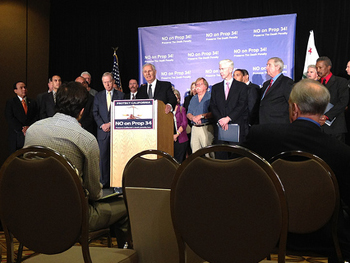 Former Governors Gray Davis, Pete Wilson and George Deukmejian gathered with victims’ families Tuesday in Downtown Los Angeles to gather last-minute support against abolishing the death penalty.
Former Governors Gray Davis, Pete Wilson and George Deukmejian gathered with victims’ families Tuesday in Downtown Los Angeles to gather last-minute support against abolishing the death penalty.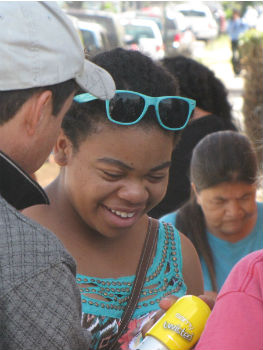
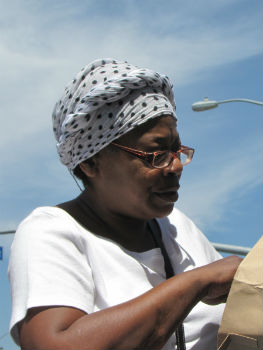
 Los Angeles County is the biggest and most diverse voting jurisdiction in the country with about 4.6 million registered voters. “We’re kind of an anomaly, we actually have more registered voters than close to 40 of the 50 states in the nation,” says Dean Logan, the LA County Registrar-Recorder. His office in Norwalk oversees all of the voting in LA County.
Los Angeles County is the biggest and most diverse voting jurisdiction in the country with about 4.6 million registered voters. “We’re kind of an anomaly, we actually have more registered voters than close to 40 of the 50 states in the nation,” says Dean Logan, the LA County Registrar-Recorder. His office in Norwalk oversees all of the voting in LA County.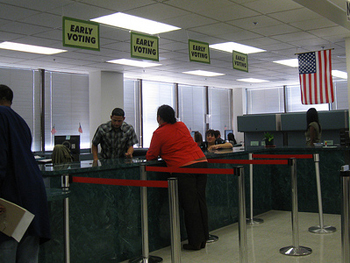
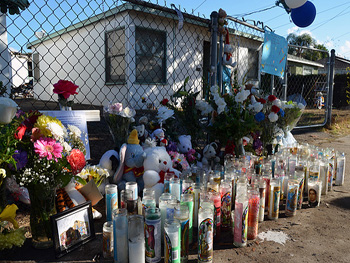 As the Lamas-Jimenez family begins to wade through the dust from a tragic shooting at their home early Saturday morning, community leaders and police departments have begun raising money for the surviving members of the family.
As the Lamas-Jimenez family begins to wade through the dust from a tragic shooting at their home early Saturday morning, community leaders and police departments have begun raising money for the surviving members of the family.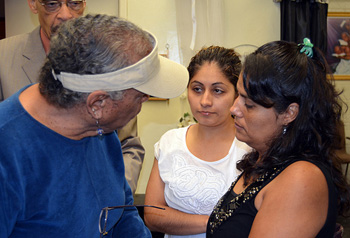 Victim advocate Lita Herron consoles Emma Lome and Carmen Hernandez three days after the tragic shooting that took the life of their brother and nephew in Inglewood on Saturday, October 20, 2012.
Victim advocate Lita Herron consoles Emma Lome and Carmen Hernandez three days after the tragic shooting that took the life of their brother and nephew in Inglewood on Saturday, October 20, 2012. 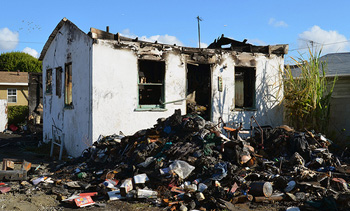 This burned down bungalow home was being rented by Desmond John Moses, who is believed to have shot his neighbors before setting his home on fire and shooting himself in the head.
This burned down bungalow home was being rented by Desmond John Moses, who is believed to have shot his neighbors before setting his home on fire and shooting himself in the head. 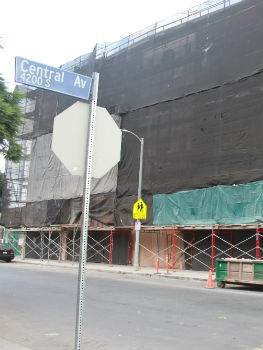

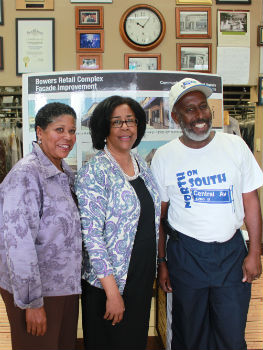
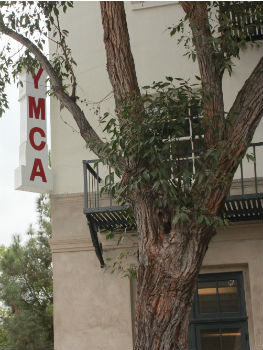
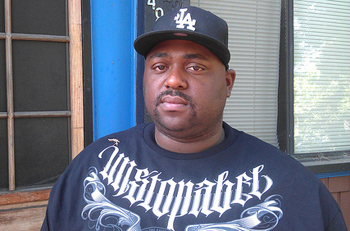 These days, 33-year-old Monte Cullors mentors young gang members, but 15 years ago, he was one.
These days, 33-year-old Monte Cullors mentors young gang members, but 15 years ago, he was one.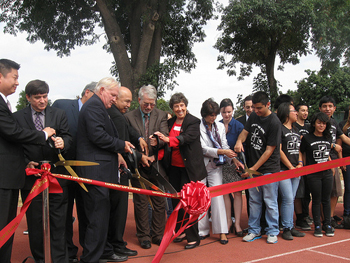
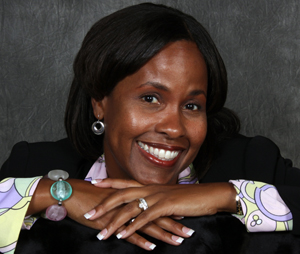 Kelly Turner was sentenced to life in prison after a third strike conviction for check forgery.
Kelly Turner was sentenced to life in prison after a third strike conviction for check forgery. 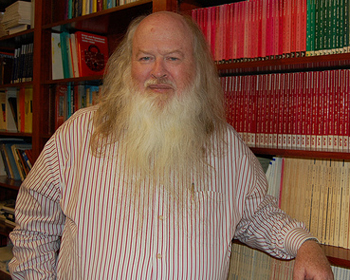 Professor Robert Nash Parker, Presley Center for Crime and Justice Studies, UC Riverside.
Professor Robert Nash Parker, Presley Center for Crime and Justice Studies, UC Riverside. 




